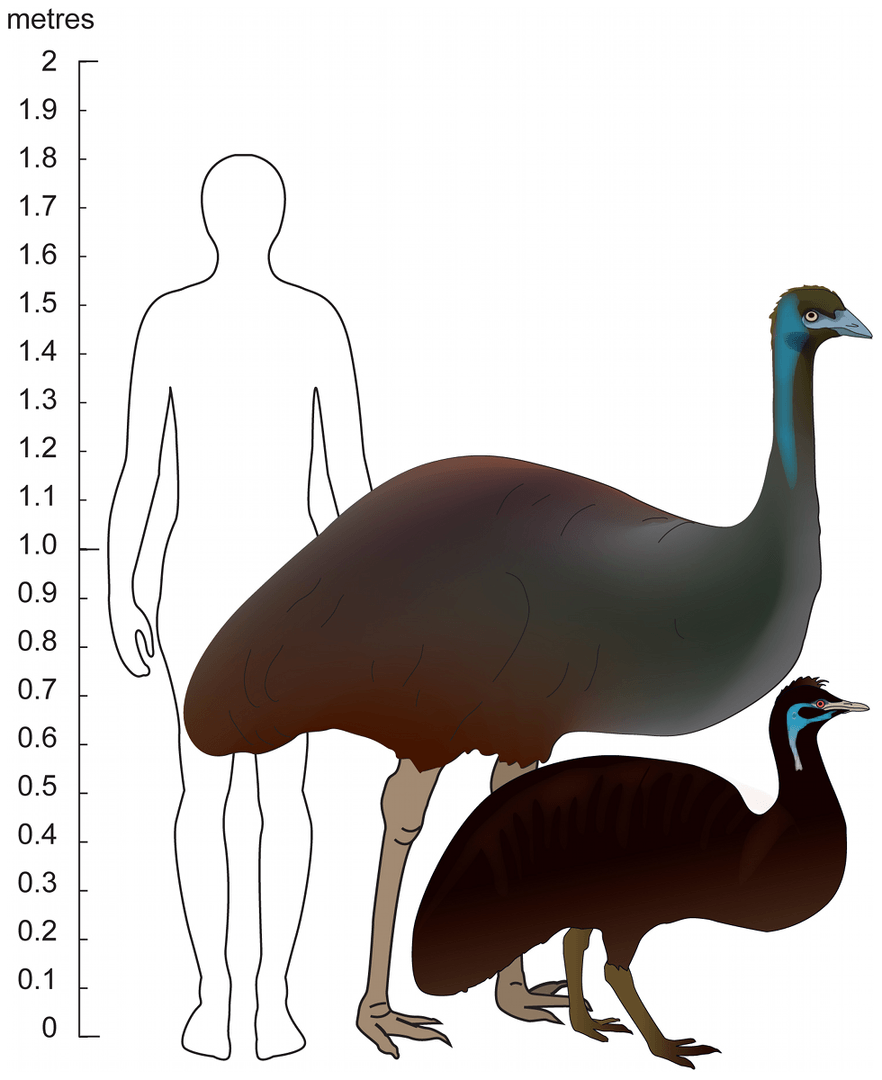From Emoe:
Appearance:
An emu is on average 1.75 meters high and weighs 36 to 40 kg. The male is usually somewhat smaller than the female. On the leg, they have three forward-facing toes and no back-facing toe. They also have long, bare legs. It is the only bird with calf muscles. This makes them good at both sprinting and long distance running. They can reach speeds of 50 km/h, are very fond of water and are good swimmers. On average, they run at a speed of 10 km/h. Their strong legs allow them to kick fences and maim predators in the wild.
They have 2 very small wings with 1 small nail/claw at the end. They can't fly with this.
They have disheveled looking, non-streamlined feathers. The feathers are light in color, except for the tips. The main function of the springs is protection against sunlight. The plumage only allows about 2% of the sun's heat through. The head is covered with irregular black feathers. The black bill specializes in eating grass.
The fry have alternating light and dark stripes in the longitudinal direction, which is a good camouflage.
Worth knowing:
Emus keep insect pests under control.
They are the only birds with calf muscles.
Reproduction in nature:
The emu mates in midsummer from December to January and breeds in the cooler months. As the days begin to shorten, the male undergoes hormonal changes, loses his appetite and begins to build a rough nest of bark, twigs, grass and leaves.
Since the female can store the sperm, she can lay a large, thick-shelled green egg that weighs 1 kg every two to three days. She can lay 5 to 24 eggs but on average there are 10. If necessary she makes more nests which are incubated by other males. One nest may also contain eggs from several females.
The male begins to incubate after the last egg is laid. He does this to keep the breeding period as short as possible. For the next eight weeks he neither eats, drinks nor defecates. He only gets up about ten times a day to turn the eggs. When the eggs hatch, he has lost a third of his body weight. The female has long since run off with other males.
Despite all the paternal cares, monitor lizards in particular often succeed in stealing eggs, but on average about four out of seven chicks make it to adulthood. After 48 to 56 days, all eggs hatch. The birth weight of the boy is about 500 grams.
The chicks are fledglings, they are about 25 cm high, are brown striped and the father leads them around for half a year to protect them and learn how to survive. He often also picks up adopted children. The chicks grow quickly, up to a kilo per week and after more than a year they are adults. In the wild, emus live about ten years, but in captivity they can reach more than double that. Emus are sexually mature after 18 to 20 months.


